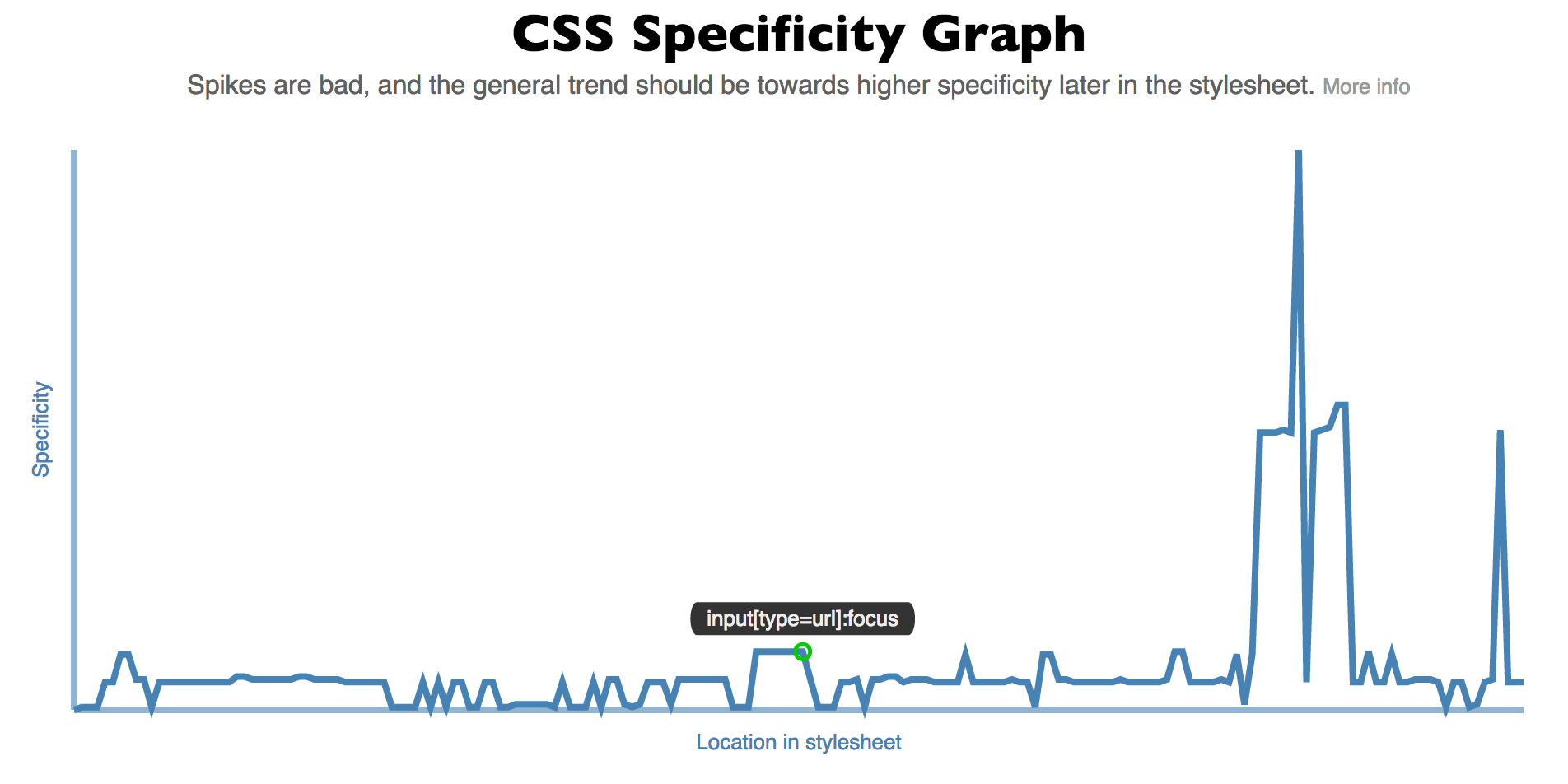specificity-graph
v0.1.7
Published
Generate an interactive Specificity Graph for your CSS.
Downloads
185
Readme
Specificity Graph (for CSS)
Idea by Harry Roberts
 Generate an interactive line graph showing the specificity in your stylesheet. Uses d3, css-parser, and specificity.
Generate an interactive line graph showing the specificity in your stylesheet. Uses d3, css-parser, and specificity.
Installation
npm install specificity-graph
Usage
specifity-graph can be used in different ways:
CLI
specificity-graph <cssFile> [options]
Creates a directory containing
jsonfile with specificity data for your CSShtmlfile with interactive specificity graph for CSS- necessary JS files to run graph
Options
| Flag | Description
| ---------------- | ------------- |
| -o --output | name for generated directory (default: specificity-graph) |
| -b --browser | auto launch browser to view generated chart |
| -h --help | Help |
Node module
var specificityGraph = require('specificity-graph');
specificityGraph(directory, css, function(directory){
console.log('specificity-graph files created in ' + directory);
});Via JavaScript
First get the specificityGraph accessible in your code:
Using Browserify (or similar)
Just require('specificity-graph').
Standalone (no module loader)
Add <script src="specificity-graph-standalone.js"></script>,
this will expose specificityGraph as a global variable.
Methods
specificityGraph.create(css, options)specificityGraph.createFromData(specificityData, options),specificityGraph.update(css)
Options
| Name | Description
| ---------------- | ------------- |
| css | String with css to generate specificity graph for |
| specificityData | JSON object with css specificity data. CLI write a JSON in this format, as does the lib/lineChart's create function' |
Create options
| Create option name | Description
| -------------------- | ------------- |
| svgSelector | Selector for svg element to draw specificity graph inside. Defaults to .js-graph. |
| width | default 1000. You should set a viewBox value on the SVG element to match width and height, f.e. viewbox='0 0 1000 4000'. |
| height | default 400 |
| showTicks | Boolean. Show scale and ticks. Default false. |
| xProp | (possible values: 'selectorIndex', 'line'). What to base the x dimension, 'location in stylesheet' in graph on: index of selector in CSS, or line number for selector in CSS. Default 'selectorIndex'. |
| yProp | default 'specificity' |
